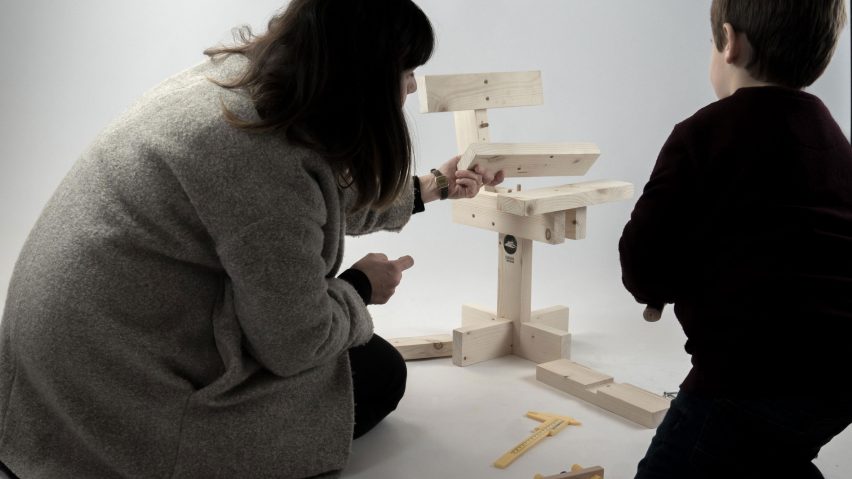Spanish designer Unai Rollan has created a chair that is delivered in 11 same-sized self-assembly pieces to teach children the basics of furniture construction.
The Hamaika chair is intended to involve the end user in the creation process, and is made from basic pieces of wood that slot or screw together.
"I wanted to transmit what I feel when creating an object," said Rollan, who named the chair after the Basque word for 11. "It's about that moment in which all the pieces fit together and become a functional object."
The designer kept the pieces as uniform in appearance as possible, meaning the chair is inexpensive and easy to manufacture. It is also efficient, as the pieces can be cut from a single strip of wood with little waste.
For Rollan, this also has the benefit of drawing attention to the assembly process. He chose a chair as a piece of furniture that offers a greater sense of ownership – particularly for younger users. According to Rollan, the chair takes around half an hour to put together.
"The final phase of the process is the one that generates that feeling of ownership and satisfaction of having created an object," he added. "In this sense, Hamaika adds to the experience through touching and working with the material."
Rollan adopted a similar philosophy for his Autoprogettazione furniture, which could be built, according to a manual, from basic materials using just a hammer and nails.
The designer set out to create a chair that would be clean and functional, relying only on basic construction. Necessary tools are kept to a minimum, and pieces either slot into one another, or screw together.
The chair is made from lightweight spruce pine, which also was chosen to make the chair more economical to produce.
"When there are limits on access to expensive processes, this can also get the best design from us," he added.
Other furniture that's aimed at younger users includes Big-Game's adjustable miniature plastic chair and a Kartell's plastic swings and seats.

